In this lab I use one Cisco 2621XM [IOS 12.4(2)T], one Cisco 2621 [IOS 12.3(18)], one Cisco 3660 [IOS 12.1(1)T], one Cisco 3640 [IOS 12.1(2)T], one Cisco 3550-24PWR-SMI [IOS 12.2(44)SE6], one Dell Force10 S60 [FTOS 8.3.3.7], and one Dell Force10 S50N [FTOS 8.4.2.6] to demonstrate multi-area OSPF in a mixed environment of Cisco and Dell Force10 switches. Below is a diagram of my lab setup.
Configs: Coyote Dog Grunt Nebula Panther Peon Zeus
Since OSPF is an open standard (RFC 2328), the syntax for configuration may differ on different vendors’ routers, but all should inter-operate seamlessly. Cisco and Dell Force10 have practically identical syntax. I cover the main syntax below; if you want to see the full configuration on a specific router, I’ve provided a link above to the ‘running-config’ for each router/switch.
Based on the above diagram, I decide to implement ‘Area 1’ and ‘Area 2’ first to see the results of not implementing the required ‘Area 0’. Remember ‘Area 0’ is the backbone area in which routes are exchanged with other areas.
Nebula – Dell Force10 S60
– enable
– conf
– router ospf 1
– router-id 255.0.0.0
– network 10.0.0.0/16 area 1
– network 11.0.0.0/16 area 1
– network 14.0.0.0/16 area 2
– end
– wr
Zeus – Dell Force10 S50N
– enable
– conf
– router ospf 1
– router-id 254.0.0.0
– network 10.0.0.0/16 area 1
– network 11.0.0.0/16 area 1
– network 14.0.0.0/16 area 2
– end
– wr
Grunt – Cisco 2621XM
– enable
– conf t
– router ospf 1
– network 10.0.0.0 0.0.255.255 area 1
– end
– wr
Peon – Cisco 2621XM
– enable
– conf t
– router ospf 1
– network 11.0.0.0 0.0.255.255 area 1
– end
– wr
Panther – Cisco 3550-24PWR
– enable
– conf t
– router ospf 1
– network 14.0.0.0 0.0.255.255 area 2
– end
– wr
Now let’s take a look at the OSPF neighbors and routes on a router from both area 1 and area 2.
Grunt (Cisco 2621XM):
Panther (Cisco 3550-24PWR):
Nebula (Dell Force10 S60):
You can see from the above that the routers only in area 1 don’t see the networks of routers only in area 2 and vice-versa. As expected, the only routers that see networks from routers in both area 1 and area 2 are those routers that are in both areas themselves.
So it is indeed possible to configure a router with two non-zero OSPF areas. However, although OSPF will run in both areas, the areas will not share routes with each other. Remember OSPF uses LSA type 1 and LSA type 2 to advertise routes within the area. LSA type 3 is used to advertise between areas, and the router will not generate type 3 LSAs unless it is connected to area 0. I prove this below by observing the output of the “show ip ospf database” command on Nebula (Dell Force10 S60) and seeing no type 3 LSAs.
I also try pinging 14.0.2.2 from Nebula (Dell Force10 S60). You can see that once I change the source of the ping to an interface in another area (area 1), the ping no longer works. It only works when pinging from an interface in the same area.
Adding ‘Area 0’
After experimenting with the above, I go ahead and add area 0. I don’t show the commands here as they’re the same syntax as displayed earlier. However, below I display the neighbors and the routes as seen on Nebula (Dell Force10 S60).
Now I take a look at the OSPF LSA database and sure enough the type 3 LSAs are being advertised.

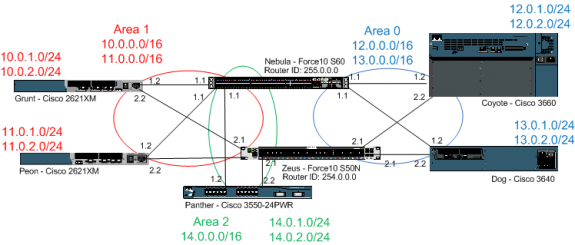

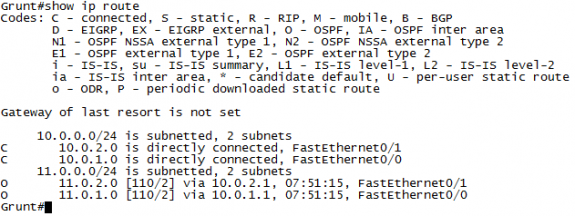



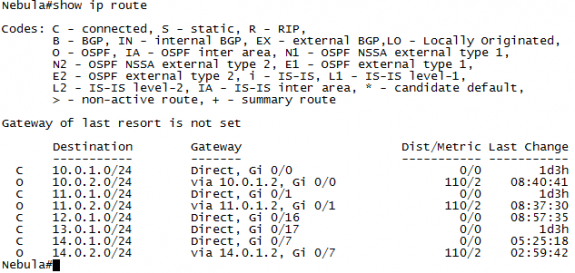
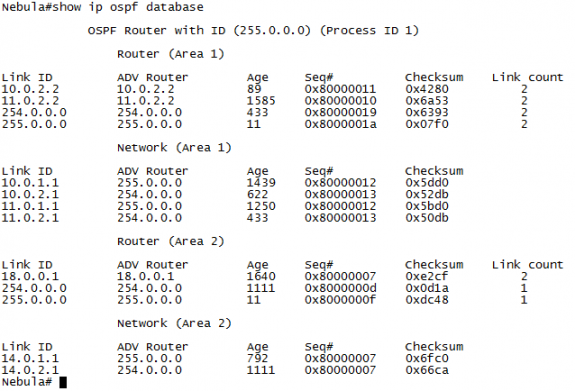
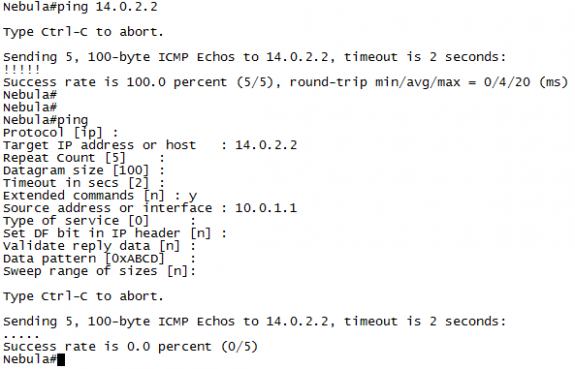

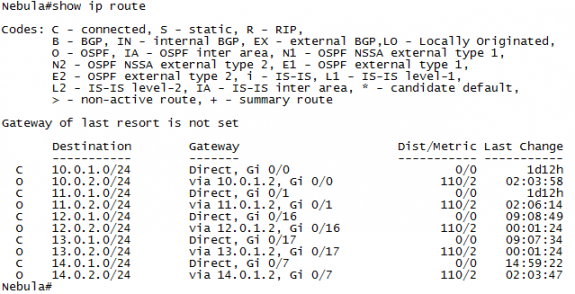
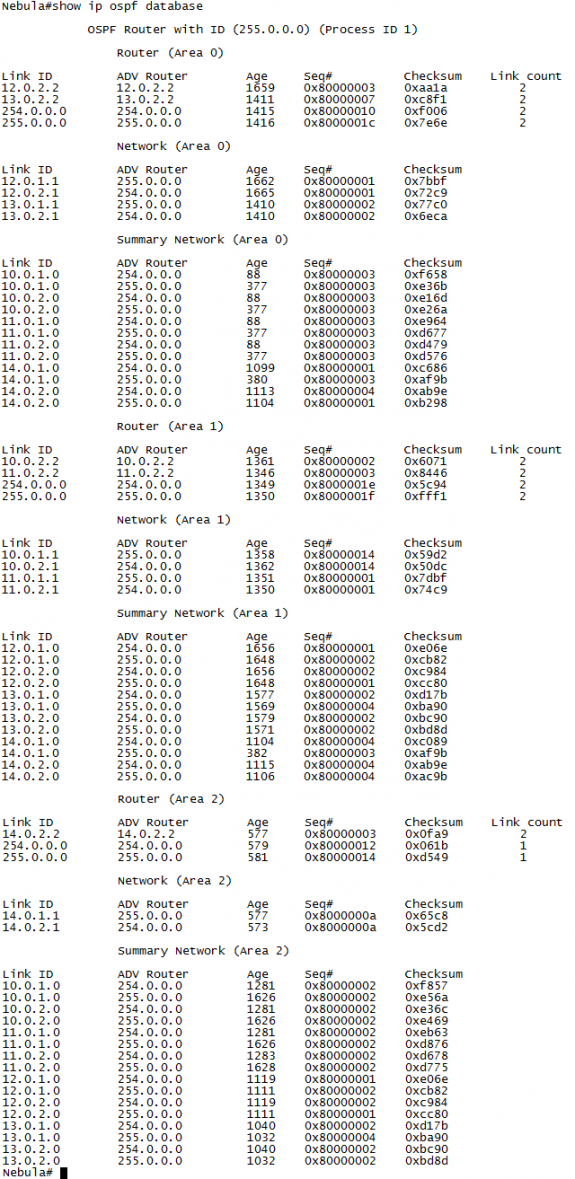


 Twitter
Twitter LinkedIn
LinkedIn Youtube
Youtube RSS
RSS